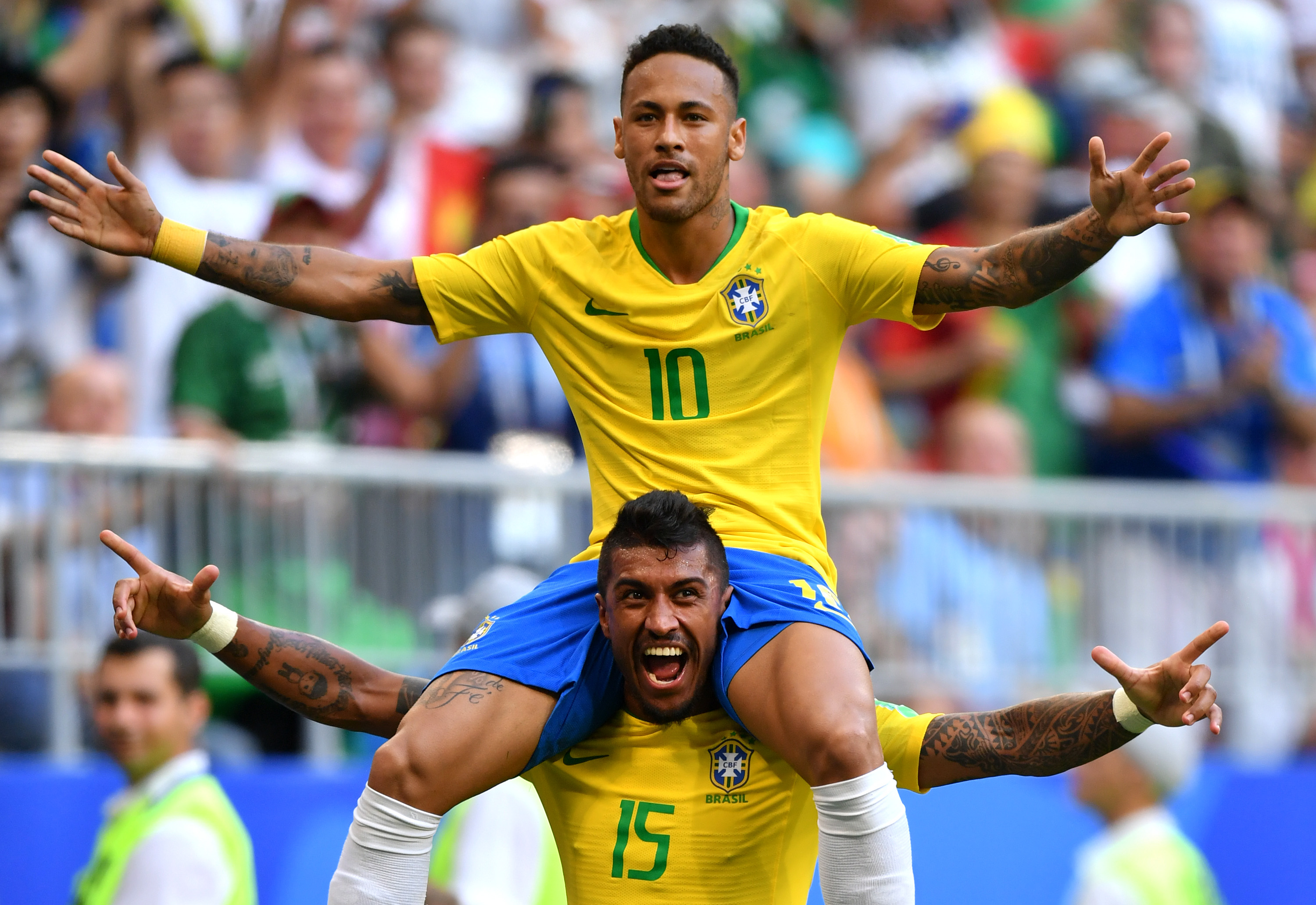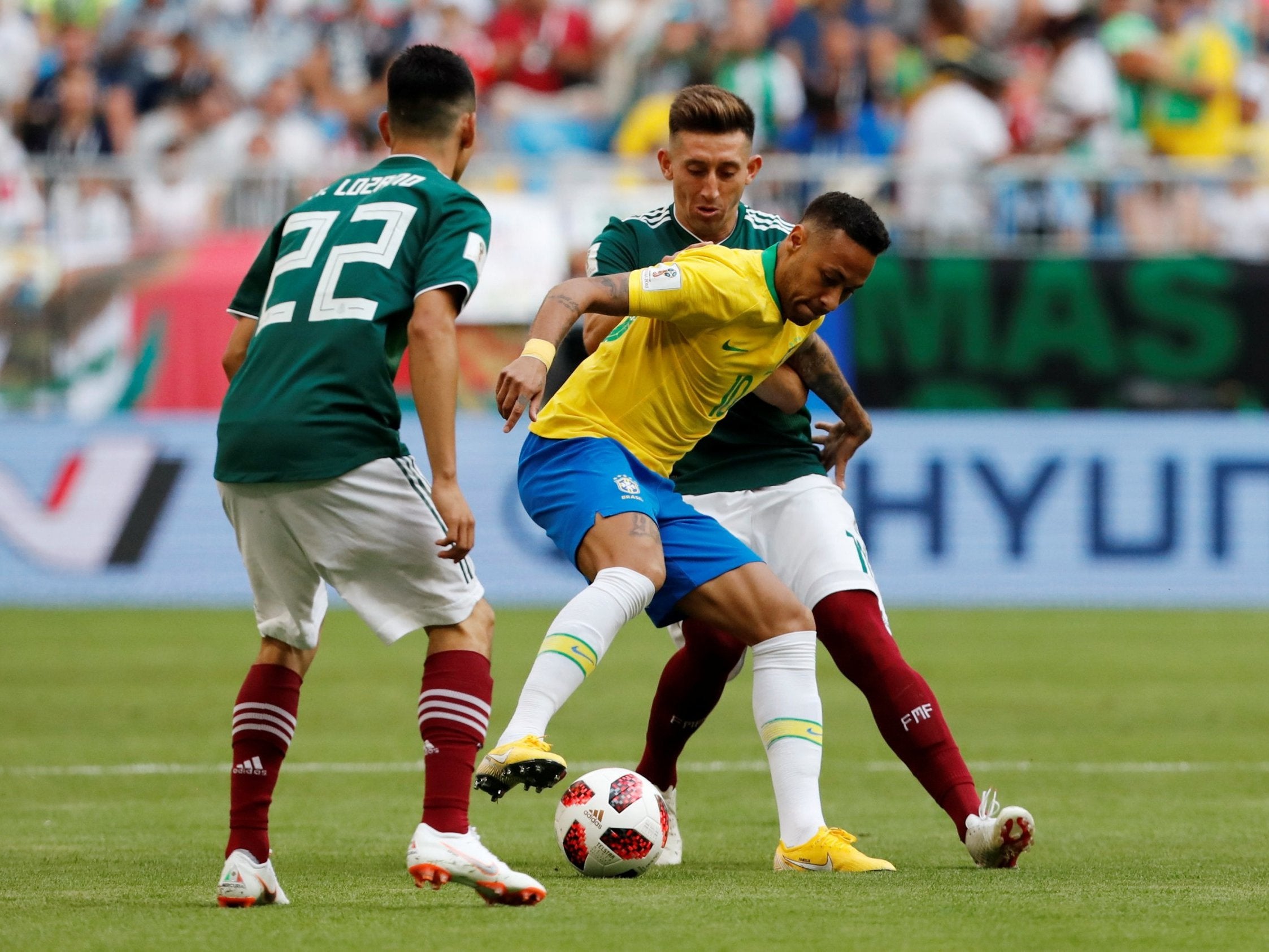Historical and Cultural Context

Mexico vs brasil – Mexico and Brazil, two vibrant nations in the Americas, share a rich tapestry of history and culture. Both countries emerged from colonial rule and underwent significant independence movements, shaping their unique identities.
The rivalry between Mexico and Brazil in football is one of the most intense in the world. The two teams have met 37 times, with Brazil holding a 19-12 advantage. Their most recent match was a 2-0 win for Brazil in the 2018 FIFA World Cup.
For more information about the history of this rivalry, visit méxico brasil.
Mexico’s history is marked by indigenous civilizations, such as the Maya and Aztec, and Spanish colonization. Brazil, on the other hand, was a Portuguese colony for over three centuries. These colonial experiences left a profound impact on their political, economic, and social structures.
Mexico and Brazil, two football powerhouses, will undoubtedly be eyeing a strong performance at the upcoming Euros 2024. The tournament will provide a stage for these teams to showcase their talent and potentially add to their impressive footballing legacies.
Despite the focus on Euros 2024, the rivalry between Mexico and Brazil remains a captivating spectacle, promising thrilling matches in the years to come.
Cultural Influences
Mexico’s cultural heritage blends indigenous traditions, European influences, and African elements. Indigenous languages, art, and cuisine are integral to Mexican identity. Brazil’s culture is a vibrant mix of Portuguese, African, and indigenous influences. Samba, capoeira, and Carnival are iconic expressions of Brazilian culture.
While the world’s attention was on the thrilling match between Mexico and Brazil, another captivating clash was taking place in the annals of football: USA vs Colombia. Like the fierce rivalry between Mexico and Brazil, the match between the United States and Colombia was a testament to the passion and determination that fuels the beautiful game.
As the echoes of the final whistle faded into the night, the world’s focus returned to Mexico and Brazil, where the battle for supremacy continued to rage on.
Diplomatic Relations
Mexico and Brazil have maintained strong diplomatic relations since the 19th century. They share a common commitment to regional cooperation and have worked together in organizations such as the Organization of American States (OAS) and the United Nations.
Economic and Social Indicators: Mexico Vs Brasil

Mexico and Brazil, two prominent nations in Latin America, share similarities and differences in their economic and social landscapes. Their respective GDPs, inflation rates, and unemployment rates exhibit both convergence and divergence, while their social structures present distinct characteristics in terms of income inequality, education levels, and healthcare systems. The trade relations between these countries have evolved over time, influenced by bilateral agreements and regional dynamics.
GDP and Economic Growth
Mexico’s GDP in 2023 is estimated at $1.3 trillion, while Brazil’s is $1.6 trillion. Brazil has a higher GDP per capita, at $7,600 compared to Mexico’s $10,200. Both countries have experienced steady economic growth in recent years, with Mexico’s GDP growing at an average rate of 2.5% and Brazil’s at 1.8%.
Inflation and Unemployment
Mexico’s inflation rate in 2023 is 7.5%, while Brazil’s is 5.8%. Both countries have faced inflationary pressures in recent years, driven by factors such as supply chain disruptions and rising energy prices. Mexico’s unemployment rate is 3.4%, lower than Brazil’s 8.5%.
Social Structure
Mexico and Brazil have similar social structures, with a large middle class and a significant informal economy. However, income inequality is more pronounced in Brazil, with a Gini coefficient of 0.54 compared to Mexico’s 0.49. Education levels are higher in Mexico, with a literacy rate of 94% compared to Brazil’s 92%. Both countries have universal healthcare systems, but Brazil’s system is more comprehensive than Mexico’s.
Trade Relations, Mexico vs brasil
Mexico and Brazil have a strong trade relationship, with bilateral trade exceeding $100 billion in 2022. Mexico’s main exports to Brazil include automobiles, electronics, and machinery, while Brazil’s main exports to Mexico include oil, soybeans, and iron ore. The two countries are also members of the Mercosur trade bloc, which has facilitated increased trade and investment between them.
Political Systems and Foreign Policy

Mexico and Brazil share a commitment to democracy and multilateralism, but their political systems and foreign policies have evolved differently. Mexico has a presidential system with a strong executive branch, while Brazil has a semi-presidential system with a more balanced distribution of power between the president and the legislature. Both countries have multi-party systems, but Mexico’s political landscape is dominated by two major parties, while Brazil has a more fragmented party system.
Constitutional Frameworks
Mexico’s constitution was adopted in 1917 and has been amended numerous times since then. It establishes a federal republic with a strong central government. The president is elected by popular vote for a six-year term and cannot be reelected. The legislature consists of a bicameral Congress, with a Senate and a Chamber of Deputies. The judiciary is independent and consists of a Supreme Court and lower courts.
Brazil’s constitution was adopted in 1988 and has also been amended several times. It establishes a federal republic with a semi-presidential system. The president is elected by popular vote for a four-year term and can be reelected once. The legislature consists of a bicameral National Congress, with a Senate and a Chamber of Deputies. The judiciary is independent and consists of a Supreme Federal Court and lower courts.
Electoral Processes
Mexico’s electoral process is overseen by the National Electoral Institute (INE), an independent body responsible for organizing and conducting elections. The INE is widely regarded as one of the most efficient and transparent electoral bodies in the world. Brazil’s electoral process is overseen by the Superior Electoral Court (TSE), an independent body responsible for organizing and conducting elections. The TSE is also widely regarded as an efficient and transparent electoral body.
Party Systems
Mexico’s political landscape is dominated by two major parties: the Institutional Revolutionary Party (PRI) and the National Action Party (PAN). The PRI ruled Mexico for over 70 years, but has been in opposition since 2000. The PAN has been the main opposition party since the 1990s. In recent years, a number of new parties have emerged, including the Party of the Democratic Revolution (PRD) and the Morena Party.
Brazil’s political landscape is more fragmented, with a number of parties represented in the National Congress. The largest party is the Workers’ Party (PT), which has been in power since 2003. Other major parties include the Brazilian Democratic Movement Party (PMDB), the Brazilian Socialist Party (PSB), and the Social Democratic Party (PSDB).
Foreign Policies
Mexico’s foreign policy is based on the principles of non-intervention, self-determination, and multilateralism. Mexico is a member of the United Nations, the Organization of American States (OAS), and the Group of 20 (G20). Mexico has also played a leading role in the promotion of regional cooperation through organizations such as the North American Free Trade Agreement (NAFTA) and the Pacific Alliance.
Brazil’s foreign policy is based on the principles of independence, sovereignty, and non-intervention. Brazil is a member of the United Nations, the OAS, and the G20. Brazil has also played a leading role in the promotion of regional cooperation through organizations such as the Mercosur trade bloc and the Union of South American Nations (UNASUR).
Challenges and Opportunities for Cooperation
Mexico and Brazil face a number of common challenges, including migration, drug trafficking, and climate change. Both countries have a strong interest in working together to address these challenges. Mexico and Brazil have also identified a number of opportunities for cooperation, including in the areas of trade, investment, and energy.
The rivalry between Mexico and Brazil in football is one of the most intense in the world. Both teams have a rich history and have produced some of the greatest players in the game. However, when it comes to the United States and Brazil, the rivalry is just as fierce.
The two teams have met in the World Cup several times, and the matches have always been close. For more information on the rivalry between the USA and Brazil, click here. Returning to Mexico and Brazil, the two teams are expected to meet again in the next World Cup, and the match is sure to be one of the most anticipated of the tournament.
The rivalry between Mexico and Brazil is one of the most intense in international football. Both teams have a rich history and have produced some of the greatest players in the world. While Mexico has never won the World Cup, they have come close on several occasions.
Brazil, on the other hand, has won the World Cup five times, more than any other country. In recent years, Portugal FC has emerged as a major force in international football. The team has won the UEFA Champions League twice in the past five years and is home to some of the best players in the world.
While Portugal FC is not as well-known as Mexico or Brazil, they are certainly a team to watch in the future. The rivalry between Mexico and Brazil is sure to continue for many years to come, and it is one of the most exciting rivalries in all of sports.